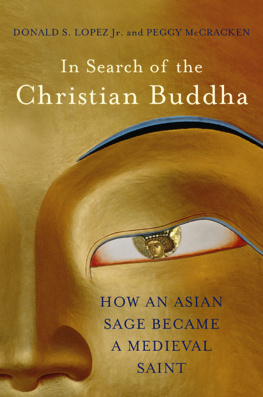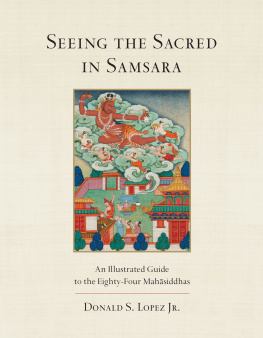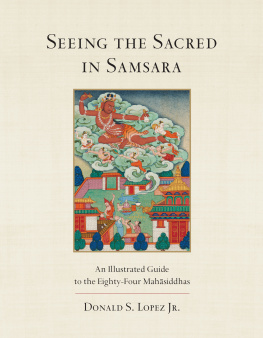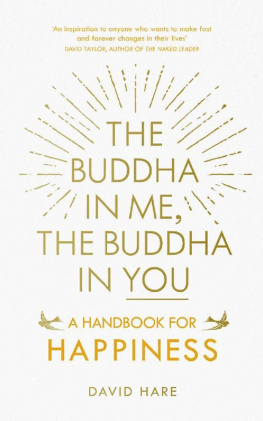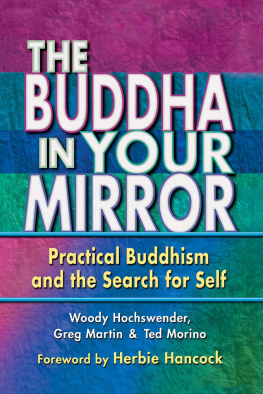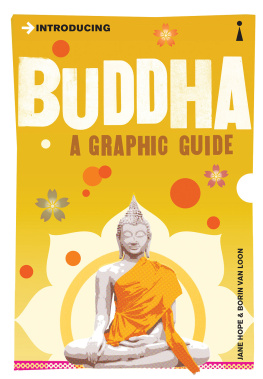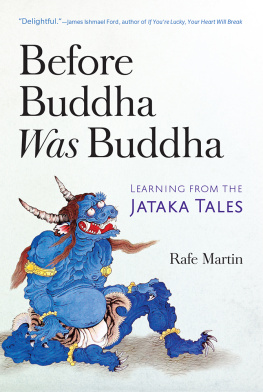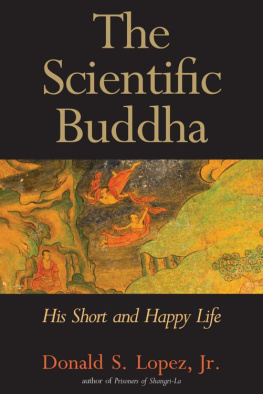
In Search of
the Christian Buddha

How an Asian Sage
Became a Medieval Saint

Donald S. Lopez Jr.
and Peggy McCracken

W. W. NORTON & COMPANY
NEW YORK | LONDON

In Search of the Christian Buddha



H e was a son, as they say, of a great king both rich and powerful. So begins Marco Polos account of the life of the Buddha, dictated to Rustichello da Pisa, a writer of romances, when the two men shared a prison cell in Genoa in 1298. Seven years earlier Polo had returned to Italy after two decades of travels through Asia. In the Description of the World, as the earliest version of Polos account is known, the Venetian traveler does not use the name Buddha. He speaks instead of an idol called Sagamoni Borcan, a name he likely learned at the pleasure dome of Kublai Khan in Xanadu. Sagamoni is Mongolian for kyamuni, sage of the kya clan in Sanskrit. Borcan is the Mongolian word for Buddha.
Polos account of the Buddha includes the story of the princes youth, his fathers attempt to isolate him from the ills of the world, his discovery of old age and death despite the kings efforts to protect him from knowledge of them, and his turn away from his fathers worldly kingdom to seek a spiritual realm. The description of Sagamoni Borcan concludes with these words: And they do hold him for the greatest of all their gods. And they tell that the aforesaid image of him was the first idol that the Idolaters ever had; and from it have originated all the other idols. And this happened in the Island of Seilan in India. The Idolaters come there on pilgrimage from very great distances and with great devotion, just as Christians go to the shrine of Saint James in Galicia.
Polo tells the story of the Buddha from a Christian perspective and compares a Buddhist pilgrimage site to the most famous pilgrimage site in all of Europe, Santiago de Compostela. For the Venetian, the Buddha was saintly: And there he abided, leading a life of great hardship and sanctity, and keeping great abstinence, just as if he had been a Christian. Indeed, had he but been so, he would have been a great saint of Our Lord Jesus Christ, so good and pure was the life he led. This positive portrayal of the Buddha is extraordinary for its time. In the long history of contact between Christians and Buddhists, Christians would far more often condemn the Buddha as an idol and a purveyor of idolatry than revere him as a saint.
There are dozens of manuscript versions of Marco Polos Description of the World, and many translations of his book were made soon after it was written. In one copy from 1446, right after the passage about Saint James, an unknown scribe added a comment: This is like the life of Saint Iosafat who was the son of the king Avenir of those parts of India, and was converted to the Christian faith by the means of Barlaam, according as is read in the life and legend of the holy fathers. This Iosafat, or Josaphat, was so well known in the Middle Ages that a copyist could allude to his similarity to Sagamoni Borcan in passing. Ours is a book about this seeming similarity. It seeks to answer this question: How did the Buddha become a Christian saint?
The earliest known version of the legend of the Christian saint Josaphat and his teacher, Saint Barlaam, appears in the Georgian language in the ninth or tenth century CE and is based on an Arabic story that is, in turn, based on the life of the Buddha. The Georgian text was translated into Greek, then into Latin, and then into virtually every language spoken in Europe during the Middle Ages. It made its way to Asia in 1591 through a Japanese translation, and in 1712 to the Philippines in Tagalog. The account of the Christian Indian prince was made into plays, including the fifteenth-century French Mystre du roy Avenir, attributed to Jean de Prieur, and Barlan y Josafat, written in 1611 by Lope de Vega, the most important dramatist of the Spanish Golden Age. Some of the narrative would be appropriated by later writers: the story of the Three Caskets, well known from The Merchant of Venice (and later the subject of an essay by Freud) comes from Barlaam and Josaphat. The legend also inspired devotion to its protagonists. In 1571, the Doge of Venice presented a bone from Josaphats spine to King Sebastian of Portugal; in 1672, the relic was enshrined in Saint Andrieskerk in Antwerp. A church with the dedication Divo Josaphat inscribed over the entrance was built in Palermo in the sixteenth century. In 1583, Pope Sixtus V authorized November 27 as the feast day of Saints Barlaam and Josaphat; the Eastern Orthodox Church assigned August 26 as Josaphats feast day and the Georgian Orthodox Church chose May 19.
There are many reasons for the legends great popularity, and we will discuss them in the pages that follow. But, put most simply, Barlaam and Josaphat is a story about how to lead our lives. Should we live in the worlda world of joy and sorrowor should we renounce it in order to find a better world in the life to come? This is a perennial question, pondered over the millennia by philosophers and saints from around the world. In some sense, it is the most basic question: If life ends in death, how should I live?
After the passing remark of Marco Polos editor, the fact that the life of the Buddha resembled the story of Barlaam and Josaphat would go largely unnoticed until 1859, four hundred years later. By that time, the obscure Asian idol had become the famed Buddha, the founder of a great religion, and a figure revered by many in the Victorian Age not for his sanctity but for his humanity, and for teaching the path to salvation to all social classes without the need for priests or rituals, or even the need for God. By that time, Josaphat was largely forgotten. And so in the nineteenth century, it was not that the life of the Buddha was like Barlaam and Josaphat; Barlaam and Josaphat was like the life of the Buddha. The order, and the priority, had been reversed.
In a sense, the legend put Buddhism and Christianity in dialogue for centuries, without the interlocutors recognizing each other. And before Barlaam and Josaphat became a Christian story, it took its most enduring shape as the Arabic work Bilawhar and Bdhsaf. Over the course of its evolution, the legend put Muslims, Jews, and Christians into contact, again, without mutual recognition. Although we will have much to say about Buddhism, Christianity, and Islam in the pages that follow, our focus will be on the story and its translations. Following in the steps of previous scholars, we will trace the circuitous pilgrimage of the story as it moves from Buddhist to Muslim and, finally, to Christian worlds. Our task, then, will be to ask not how stories circulate among religions, but how religions circulate among stories.
Next page
